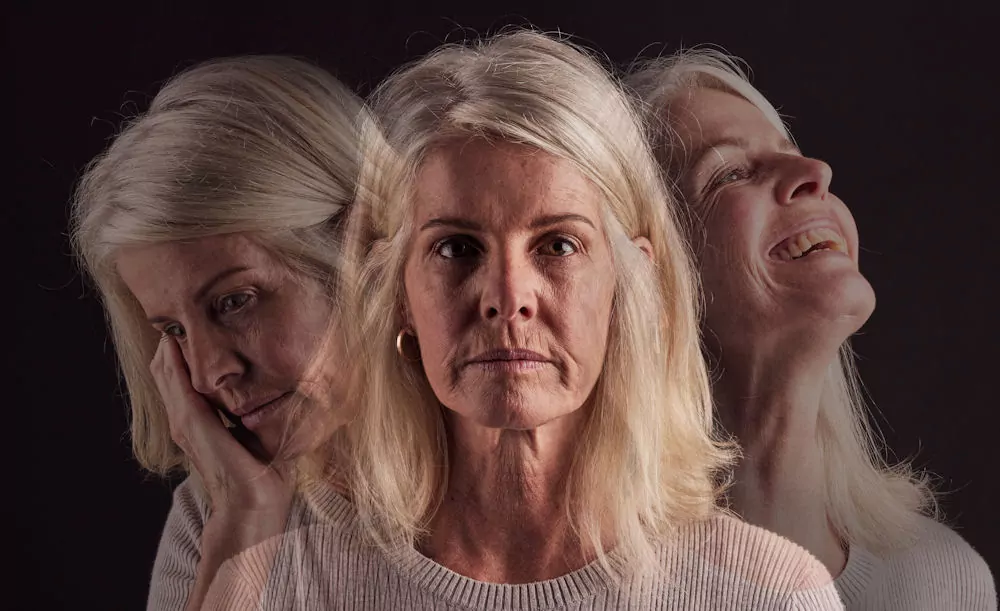Many women ask what causes mood swings in women, especially when changes in mood feel sudden or hard to explain. SensIQ, led by Dr. Luke Barr, shares science-based insights that reveal these shifts often stem from hormonal fluctuations, underlying health conditions, or daily stress.
By understanding the causes, women can discover ways to manage their symptoms and enhance their daily lives.
Key Takeaways
- Mood swings in women are most often linked to hormonal fluctuations during the menstrual cycle, pregnancy, and menopause, but lifestyle stress and medical conditions can also play a role.
- Common symptoms include irritability, sadness, anxiety, poor sleep, and changes in concentration. Tracking these patterns helps doctors provide accurate diagnoses.
- Constant or severe mood swings may signal underlying health conditions such as bipolar disorder or thyroid issues, and should be evaluated by a medical professional.
- Management strategies range from natural approaches, such as exercise and improved sleep, to professional care, medication review, and safe, non-hormonal supplements, like creatine.
- Seeking medical help is essential when mood swings disrupt daily life, cause hopelessness, or reduce interest in normal activities.
Hormonal Causes of Mood Swings
What Hormone Causes Mood Swings in Women
Hormonal fluctuations in estrogen and progesterone affect how the brain works. These hormones fluctuate throughout the month and play a role in mood regulation. This is why mood swings in women often connect with changes in hormone levels.
Mood Swings Before and During Periods
Premenstrual syndrome (PMS) is common. Symptoms include sadness, irritability, or worry before a period. Some women have stronger changes, called premenstrual dysphoric disorder (PMDD), which is a mental health condition. Both PMS and PMDD show how the menstrual cycle shapes women’s health.
Pregnancy and Postpartum Changes
During pregnancy, hormone levels rise quickly. After birth, hormone levels fall, and some women feel sad or anxious. In some cases, this leads to postpartum depression. These shifts are examples of how health conditions in women affect mood.
Perimenopause, Menopause, and Older Age
Hormonal imbalance in perimenopause and menopause often brings mood swings, hot flashes, and poor sleep. Many women experience these changes as they age, and resources on menopause and mental health show how emotional well-being is deeply connected to these hormonal shifts.
SensIQ offers protocols that are medically reviewed and designed to support women during this stage without using hormones.
Other Triggers of Female Mood Swings

Sudden, Severe, or Unexplained Mood Swings
At times, mood swings appear without warning. These can feel severe or come for no clear reason. Stress, medical conditions, or side effects from medication often explain these sudden changes.
Stress and Lifestyle Factors
Poor sleep, high stress, or too much caffeine and alcohol can trigger female mood swings. Busy schedules also raise the risk of mood changes. Small changes, such as improving sleep and incorporating daily exercise, may help reduce triggers.
Mental Health and Medical Conditions
Mood swings may point to a mental health condition. Bipolar disorder is one example, with episodes of sadness and high energy. Anxiety and thyroid disease are also medical conditions that affect mood. A mental health professional can give the right diagnosis and care.
Medications and Underlying Illnesses
Some forms of birth control and other drugs can cause side effects that affect mood. Chronic illnesses like diabetes or heart disease can also play a role in mood. Women should talk to a doctor if they notice new changes after starting a medication.
Why Do I Have Constant Mood Swings?
Constant mood swings may mean more than normal hormonal fluctuations. In some cases, they can also be related to late menopause, when hormone shifts continue longer than expected. Keeping a mood journal helps track symptoms and gives useful details to a doctor.
When to Seek Medical Help
If mood swings are persistent or significantly interfere with daily life, seeking medical advice is important. Women should reach out to a mental health professional if symptoms include hopelessness, ongoing sadness, or loss of interest in normal activities. Seeking support early can prevent more serious health conditions from developing.
Impact of Mood Swings on Daily Life
Mood swings affect relationships, focus, and work. Symptoms include irritability, sadness, or quick changes in energy. Over time, these problems can erode confidence and increase stress. Knowing how they affect daily life is the first step to finding answers.
Common Symptoms of Mood Swings in Women
Mood swings often share similar signs across different stages of life. Recognizing these symptoms helps women track patterns and share accurate information with a healthcare provider. Common symptoms include:
- Irritability or anger that comes and goes.
- Sadness or feelings of low mood.
- Anxiety or nervousness without a clear cause.
- Trouble focusing or loss of concentration.
- Changes in sleep, including insomnia or oversleeping.
Not every woman will have all of these symptoms. Tracking which symptoms include intensity or frequency can guide a better medical evaluation.
How to Manage Mood Swings in Women

How Do You Fix Mood Swings?
There is no single fix, but there are ways to manage. Women experience better results when they track symptoms, understand triggers, and seek medical advice.
How to Control Mood Swings Naturally
Natural methods include regular exercise, a balanced diet, and adequate sleep. Mindfulness and deep breathing also lower stress. These habits support balance in hormone levels and the brain’s role in mood.
Practical Lifestyle Strategies
- Keep a steady sleep schedule.
- Track symptoms across the menstrual cycle.
- Add daily movement, like walking.
- Use stress-reduction habits, such as meditation.
Professional Support and Medical Care
If mood swings disrupt daily life, seeing a mental health professional is key. Doctors can check for bipolar disorder, depression, or other conditions. Dr. Luke Barr emphasizes the importance of medically reviewed care, which reduces the risk of ongoing symptoms.
How Doctors Diagnose Mood Swings
Doctors use several steps to understand mood swings. They review a woman’s medical history and ask questions about daily life and common symptoms. Blood tests may be ordered to check hormone levels or other health conditions.
In some cases, a mental health professional provides an evaluation to see if a mental health condition like bipolar disorder or depression is present.
Safe Supplements and Non-Hormonal Options
Supplements may help with mood balance. One example is creatine, which shows promise in brain and mood health¹. Gentle non-hormonal aids, such as Calm, are designed to support stress relief and relaxation alongside healthy routines. SensIQ uses pharmaceutical-grade ingredients with clear protocols, so women do not have to guess.
Key Takeaway: Understanding Female Mood Swings
The causes of mood swings in females include hormonal fluctuations, lifestyle triggers, and medical conditions. By understanding mood swings in women, they can make informed choices that improve their overall health.
With support from experts like Dr. Luke Barr and programs like SensIQ, women can discover safe and evidence-based ways to feel more stable.
References
1. Rooney, K., Kaviani, M., & Paolucci, E. (2024). Creatine supplementation for women’s health and brain function. Nutrients, 16(3), 457. https://doi.org/10.3390/nu16030457


